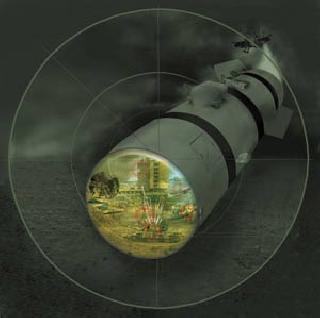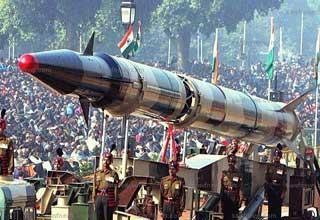
Lockheed Martin's cooled tri-mode seeker. Photo: Lockheed Martin.
ORLANDO, FLORIDA (BNS): The US Air Force Research Laboratory (AFRL) Munitions Directorate and Lockheed Martin have signed a five-year cooperative research and development agreement (CRADA) to assess the viability of its cooled tri-mode seeker for integration onto Air Force weapon platforms.
Lockheed Martin and AFRL will work together over the next five years to thoroughly assess tri-mode weapon capabilities, emerging targeting concepts and guidance techniques, according to a news release by the aerospace company.
Data and analysis from this effort will enable AFRL to develop a baseline for integrating seekers onto future U.S. Air Force weapon platforms intended to engage stationary and mobile targets in day, night and adverse weather conditions.
"We will work closely with Lockheed Martin to leverage their mature seeker technology with some of our novel in-house targeting concepts," Buddy Goldsmith, chief of the U.S. Air Force’s Weapon Seeker Sciences Branch and Seeker Phenomenology Evaluation and Research (SPEAR) facility, was quoted as saying in the news release.
Lockheed Martin’s cooled tri-mode seeker is based on three combat-proven weapon systems: Javelin, LONGBOW and HELLFIRE. The first-generation tri-mode seeker was developed in 2001 for the Common Missile programme; later generations were developed for the Small Diameter Bomb II and other weapon systems.
The seeker, now in its fourth generation, has undergone thousands of hours of laboratory, tower and captive-carry tests and has been proven in dirty battlefield testing and in guided flight.
The tri-mode seeker combines a semi-active laser sensor, an imaging infrared (I2R) sensor and a millimeter wave radar into a single seeker with a common aperture, the release added.
The cooled I2R sensor provides passive detection and lock-on-before-launch from substantial standoff ranges, significantly increasing warfighter survivability. All three sensor modes run simultaneously and share information in flight, allowing warfighters to defeat moving and stationary targets on land, at sea, in adverse weather and in an obscured/countermeasure environment, with true fire-and-forget capability.
Lockheed Martin’s tri-mode seeker recently defeated a variety of countermeasures and obscurants in a series of challenging and realistic battlefield environments.
Test results demonstrated all three sensor modes successfully communicated and worked collaboratively to effectively address and defeat each countermeasure and obscurant, targeting both moving and stationary targets.
 Previous Article
Previous Article Next Article
Next Article












The Indian Air Force, in its flight trials evaluation report submitted before the Defence Ministry l..
view articleAn insight into the Medium Multi-Role Combat Aircraft competition...
view articleSky enthusiasts can now spot the International Space Station (ISS) commanded by Indian-American astr..
view article